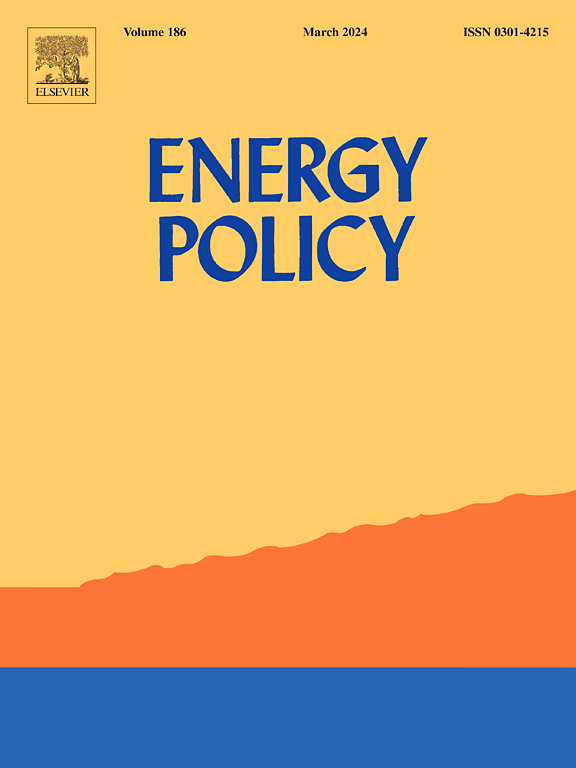Exploring the EU sustainability divide: Analyzing disparities in climate investments
IF 9.2
2区 经济学
Q1 ECONOMICS
引用次数: 0
Abstract
Given the undeniable climate crisis, understanding how the European Union (EU) is investing in fighting against climate change is of critical importance. It is therefore essential to explore whether these efforts and investments reflect a unified strategy or disparities among member states. To achieve this, a factor and cluster analysis is conducted on seven key dimensions of current EU climate change investments, identifying two focus areas: renewable energy and electric mobility (e-mobility). The cluster analysis categorizes EU countries into five distinct groups, ranging from sustainability leaders to laggards. Additionally, the evolution of these disparities is analyzed over time (2018–2020). Findings reveal that Denmark, Luxembourg, and Sweden, emerge as sustainability leaders, in both renewables and e-mobility, showing great capacity e expanding HRES investment and contributing significantly to national load balancing and GHG reductions. In contrast, other nations prioritize one area while neglecting the other, hindering balanced sustainability progress. Additionally, while the variation in the renewables decreased over time, indicating a narrowing asymmetry in this dimension, the variation in the e-mobility increased significantly, reflecting a widening gap. Though progress is evident, achieving a more unified and balanced sustainability strategy across the EU requires further investment in both renewables, including HRES, and e-mobility, alongside policy initiatives that promote holistic climate action and reduction of emissions. Strengthening national implementation plans, financial incentives, and public awareness, together with a cross-country knowledge-sharing initiatives, are suggested to improve the fair and sustained progress of all countries toward the EU's green transition goals.
探索欧盟可持续性鸿沟:分析气候投资的差异
鉴于不可否认的气候危机,了解欧盟(EU)如何投资应对气候变化至关重要。因此,必须探讨这些努力和投资是否反映了成员国之间的统一战略或差异。为了实现这一目标,对当前欧盟气候变化投资的七个关键方面进行了因素和聚类分析,确定了两个重点领域:可再生能源和电动交通(e-mobility)。聚类分析将欧盟国家分为五个不同的组,从可持续发展的领先者到落后者。此外,还分析了这些差异随时间(2018-2020年)的演变。研究结果显示,丹麦、卢森堡和瑞典在可再生能源和电动交通方面都处于可持续发展的领先地位,在扩大HRES投资方面表现出巨大的能力,并为国家负载平衡和温室气体减排做出了重大贡献。相比之下,其他国家优先考虑一个领域而忽视另一个领域,阻碍了平衡的可持续发展进程。此外,虽然可再生能源的变化随着时间的推移而减少,表明这一维度的不对称性在缩小,但电动交通的变化显著增加,反映出差距在扩大。尽管取得了明显的进展,但在整个欧盟范围内实现更加统一和平衡的可持续发展战略需要进一步投资于可再生能源,包括HRES和电动汽车,以及促进整体气候行动和减少排放的政策举措。建议加强国家实施计划、财政激励和公众意识,以及跨国知识共享举措,以促进所有国家在实现欧盟绿色转型目标方面的公平和持续进展。
本文章由计算机程序翻译,如有差异,请以英文原文为准。
求助全文
约1分钟内获得全文
求助全文
来源期刊

Energy Policy
管理科学-环境科学
CiteScore
17.30
自引率
5.60%
发文量
540
审稿时长
7.9 months
期刊介绍:
Energy policy is the manner in which a given entity (often governmental) has decided to address issues of energy development including energy conversion, distribution and use as well as reduction of greenhouse gas emissions in order to contribute to climate change mitigation. The attributes of energy policy may include legislation, international treaties, incentives to investment, guidelines for energy conservation, taxation and other public policy techniques.
Energy policy is closely related to climate change policy because totalled worldwide the energy sector emits more greenhouse gas than other sectors.
 求助内容:
求助内容: 应助结果提醒方式:
应助结果提醒方式:


